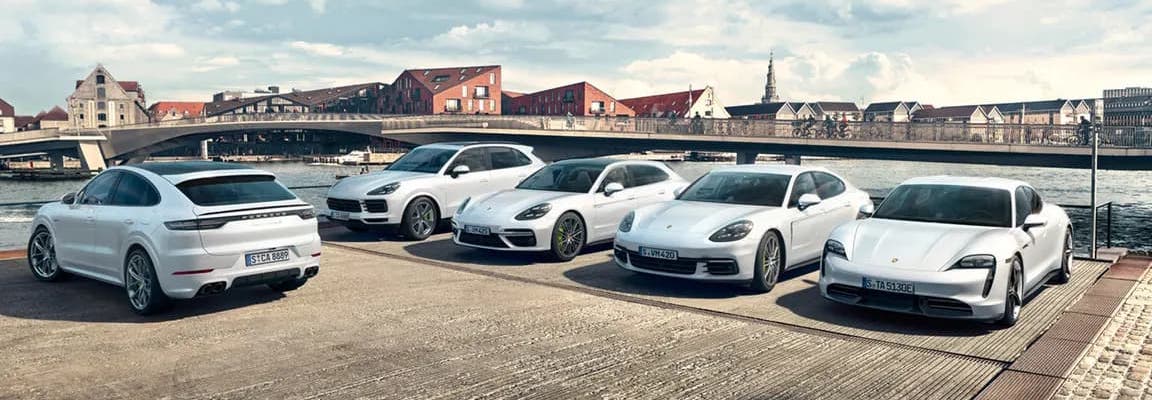Throughout the automotive world, electric vehicles (EVs) are often lauded for their eco-friendliness and technological innovations. However, one aspect that frequently raises eyebrows is their weight, particularly when it comes to models produced by illustrious manufacturers like Porsche. With an undeniable reputation for speed and luxury, Porsche’s foray into electric mobility has evoked curiosity and, for some, a sense of perplexity: why are Porsche electric vehicles so heavy? Let’s dive into this intriguing conundrum.
At first glance, it might seem counterintuitive that sports cars, engineered for dynamic performance, should bear such hefty weights. The conundrum lies in the intrinsic qualities of electric vehicles, which differ greatly from their internal combustion engine (ICE) counterparts. While weight can often bring momentum and stability, excessive heft can impede agility—a critical aspect for any performance-focused automotive design. Thus, understanding the components contributing to this weight gain can shift our perspective on what it means to drive electric.
One of the principal reasons for the additional weight of Porsche EVs is the battery technology. Modern electric vehicles are reliant on large lithium-ion battery packs to provide the requisite range and power. In fact, the weight of the battery itself can account for a significant portion of a vehicle’s total mass. To achieve the performance capabilities that Porsche is known for, engineers have opted for high-capacity batteries, which, while enhancing range and power, bestow their own gravitational pull.
To offer an example, most electric vehicle batteries weigh between 600 and 1,200 pounds. Porsche, with its commitment to performance, often integrates larger and more advanced battery systems to allow for rapid acceleration and extended range. This dilemma poses a fascinating tension: how do you balance the need for power and efficiency without compromising the lightness that many drivers relish in sporty vehicles? This question propels us deeper into the multilayered design considerations of electric mobility.
Moreover, the incorporation of robust materials leads to another layer of complexity in weight considerations. Porsche has a long-standing tradition of employing high-performance materials such as aluminum and carbon fiber in their vehicles. In the case of the electric models, the need for increased structural integrity to accommodate battery weight adds layers of reinforcement, thus augmenting the total mass further. The other components—motors, controllers, and wiring—all contribute additional weight that accumulates as you consider the complete assemblage of an electric vehicle.
Porsche engineers meticulously design the chassis of their electric vehicles to optimize weight distribution, which is quintessential for performance. Achieving an even weight distribution not only enhances the handling characteristics but also boosts overall driving experience, imparting a sense of connection between driver and machine. Striking this balance requires heavier components strategically placed to lower the center of gravity, which further complicates the task of minimizing weight while retaining performance standards. Such intricate engineering highlights the commitment to not just performance but driving pleasure.
The evolution of automotive technology has also necessitated an integration of weightier systems designed for safety and comfort. Electric vehicles, including those from Porsche, are equipped with expansive safety features that include reinforced crumple zones, which can add substantial weight. In contrast to more conventional vehicles, the silence of an electric drivetrain places a premium on a variety of sound dampening materials, driving up the weight for a more refined drive. While this safety focus is imperative, it does add to the total weight incurred in the design of electric vehicles.
Then there’s the issue of range anxiety. With consumers demanding longer ranges from their EVs, manufacturers are incentivized to equip vehicles with heavier, high-capacity battery systems. This creates a feedback loop: the more weight added for the sake of range enhancement, the more robust the chassis and suspension must be to handle the extra pounds. Hence, a delicate interplay is at work, as performance influences battery choice and overall vehicle design.
It would be remiss not to mention the evolution of public perception. For many consumers, a heavier electric vehicle represents a lack of performance or speed. This stereotype is slowly being challenged by the emergence of impressive models that bridge the chasm between weight and performance. Indeed, heavy can be thrilling—a mantra that manufacturers like Porsche are now embracing. The torque of an electric motor can oftentimes yield exhilarating bursts of acceleration, showcasing how weight can become an ally rather than an adversary.
Yet, as Porsche endeavors to refine the balance between performance and efficiency, the future may continue to illuminate revolutionary advancements in battery technology. Innovations such as solid-state batteries promise substantial weight reductions while enhancing energy density. This could usher in a new era for electric vehicles, allowing various manufacturers to pare down weight without compromising the luxury and performance that are synonymous with their brands.
In examining the question of weight within the context of Porsche’s electric vehicles, it’s clear that multiple factors coalesce to create a complex tapestry of technology, design, and consumer demand. From the formidable battery systems to the intricately engineered chassis, several elements interplay to bring Porsche’s vision to fruition. Thus, the weight isn’t merely an inconvenience; it becomes a testament to the evolution and ambition of the electric renaissance in the luxury automotive sector. As we contemplate this transition, the question may no longer be “why are they heavy?” but instead, “how do they redefine what it means to drive electric?”
Ultimately, the heft of Porsche electric vehicles is an invitation to rethink our preconceived notions about performance and weight. As the electric vehicle landscape continues to evolve, understanding these nuances will deepen our appreciation not just for Porsche’s contributions but for the broader narrative of innovation within the automotive domain.
